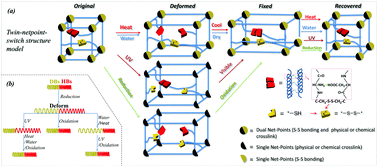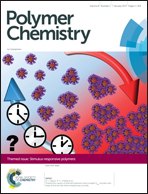Is biopolymer hair a multi-responsive smart material?
Abstract
For thousands of years, animal hairs have been merely considered as textile fibers with outstanding performances such as excellent elasticity and thermal insulation. Only recently, we have obtained indications that animal hair may be a smart natural material which displays shape memory (SM) effects responsive to four types of stimuli: heat, water, redox agents and UV-light. These smart functions of animal hair are found to be the result of its three structural components: crystals, and hydrogen (HB) and disulfide (DB) bonds among its intra- and inter-macromolecules. In this paper, camel hair was employed as one typical animal hair to investigate the SM abilities under four types of stimuli, in which the HBs were analyzed by Fourier Transform Infrared spectroscopy and the DBs by Raman spectroscopy, while the Tg and crystal structure of camel hair were determined using differential scanning calorimetry and X-ray diffraction. The shape fixation and recovery ratios were determined using an Instron tensile tester with an environmental chamber. It was discovered that the crystals in hair remain intact under the four stimuli, indicating their role as netpoints for hair SM. Under the stimuli of water and heat, the DBs of hair were characterized as unchangeable, whereas the HBs were found to vary under dry and wet conditions, indicating the roles of DBs as netpoints and HBs as switch units. For UV-light, HBs and crystals were found to be invariable and DBs were converted into thiol groups under a UV stimulus. With a redox agent containing reductant ions and aqueous molecules, it was found that DBs and HBs both worked as switch units and crystals acted as netpoints. Thus, the SM mechanism of animal hair was modelled through a twin-netpoint-switch structure. Beneficially, this natural insight can help to inspire applications for making synthetic materials with smarter functions for more environmental adaptability and impactful applications.

- This article is part of the themed collection: Stimulus-responsive polymers

 Please wait while we load your content...
Please wait while we load your content...